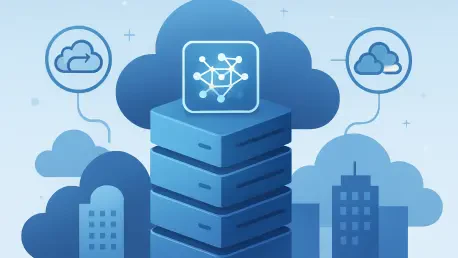Banks confronted a stark reality as high-profile outages and cloud incidents forced resilience from a budgeting line item into a board-level obligation, and that shift set the stage for platforms that promise not just durability but verifiable continuity at scale. Against that backdrop, OpenCoreOS entered the conversation with an AI-operated, active-active, multi-cloud core slated for a January 2026 debut, positioning resilience as both an engineering stance and a compliance strategy. The market now evaluates whether multi-cloud-by-design and agentic operations can convert concentration risk into a manageable variable rather than a hidden dependency.
The purpose of this analysis is to frame OpenCoreOS within the current demand curve for operational resilience, to assess differentiation against modern core competitors, and to outline adoption paths that align with regulatory expectations. The lens is commercial: where value accrues, what execution risks remain, and how procurement patterns are likely to change as AI moves from feature to fabric. The stakes are high, because outcomes here influence not only cost curves but regulatory posture and customer trust.
The core insight is straightforward: multi-cloud resilience and AI-operated reliability are on track to become default requirements for systemically important institutions. What remains contested is delivery—proof of active-active scale, governance of agentic systems, and cost discipline across three clouds. OpenCoreOS targets that gap with a product thesis shaped by collaboration with two large U.S. banks and a leadership team with deep operating experience, while competitors anchor to single-cloud strategies that now face tougher questions from risk and audit.
Why Resilience Became The Buying Criterion
Over recent years, shared cloud services turned into systemic dependencies, and when major platforms stumbled, banks learned how quickly correlated failures propagate across regions and lines of business. That experience pushed operational resilience from recovery-time paperwork to verifiable cross-cloud continuity, with supervisors pressing for evidence rather than assurances. In this environment, outage containment and deterministic failover became product features, not optional extras.
Meanwhile, modern cores achieved meaningful gains in speed of change, product modularity, and cost transparency, yet most still rely on a primary cloud and a failover posture that rarely exercises true active-active behavior. This created a paradox: improved agility at the edge but persistent fragility at the center. The opportunity for an “unbreakable” core emerged as a response to that paradox, promising synchronized state, bounded blast radius, and audit-ready control planes.
AI accelerated the pivot. Reliability engineering increasingly benefits from agentic systems that automate diagnosis, remediation, and runbook execution. As model choices proliferate, large institutions favor model neutrality and data residency controls over vertically integrated AI stacks. Vendors that blend multi-cloud distribution with AI-directed operations now find a receptive audience—assuming controls, explainability, and separation of duties keep pace.
Competitive Positioning And Product Thesis
OpenCoreOS advances a simple proposition: operate the core across Azure, Google Cloud, and AWS at the same time, keep state consistent, and let AI run the reliability loop with humans in charge of thresholds and approvals. The approach aims to neutralize cloud concentration risk while enabling banks to bring their own LLMs through secure gateways, keeping sensitive data in their environments. Leadership experience and early work with two tier-one U.S. banks add credibility to claims that the design reflects real throughput and latency demands.
The target scale—over 100 million accounts and 300 million daily transactions—sits squarely in tier-one territory, where even single-digit minutes of downtime translate into customer churn and regulatory heat. By pledging forward-deployed engineering and six-month go-lives, OpenCoreOS seeks to compress time to value and derisk integration, a model that other complex software providers used successfully in regulated sectors. A public hackathon planned early next year signals confidence and a willingness to expose assumptions under pressure.
Competitors known for modularity and speed now face a renewed bar: verifiable active-active behavior across clouds, not just portability or multi-region fallbacks. This is not a small shift; it redefines resilience from a deployment option to a core design characteristic. Vendors that cannot demonstrate synchronized, cross-cloud continuity will likely encounter more stringent procurement hurdles, especially where critical service obligations already stretch current controls.
Architecture Economics And Risk
The engineering lift for true active-active is significant. Cross-cloud state fidelity, deterministic failover, and network economics must balance throughput with acceptable unit costs, especially when traffic triangulates across providers. The most durable designs will partition workloads, constrain blast radius, and use consistency models that tolerate partial failure without orphaning transactions. That requires granular observability, well-defined rollback semantics, and chaos testing that runs continuously rather than quarterly.
Agentic operations introduce a second axis of risk and reward. If Mars—the platform’s SRE automation layer—and its AI Command Center can offload the bulk of incident response and routine operations, the promised 95% resource reduction becomes plausible. However, autonomy without guardrails raises new failure modes, so banks will expect strict approval gates, immutable audit trails, and explainable decision paths mapped to model risk policies. In practice, the winning approach pairs machine-led speed with human oversight that can halt action when conditions drift.
Cost control will decide long-term viability. Triple-cloud distribution can turn into a margin drag if replication, egress, and observability costs expand unchecked. The economic case improves when AI reduces manual toil, when data movement is minimized, and when routing strategies optimize for locality. Buyers will benchmark total cost of reliability against the financial impact of outages and fines, creating room for premium pricing if uptime and evidence exceed the current market norm.
Regulation, Governance, And Procurement Dynamics
Regulators increasingly favor demonstrable resilience: cross-cloud testing, incident telemetry, and auditable evidence that recovery objectives hold under stress. In the EU and UK, DORA and operational resilience regimes push third-party oversight and exit planning into the early design conversation. In the U.S., scrutiny centers on uptime for critical services and concentration risk management. Across jurisdictions, the pattern converges on the same demand—proof that continuity survives correlated failures.
Governance therefore becomes a product capability, not a document set. Model neutrality supports data sovereignty, while BYO-LLM reduces lock-in and preserves bank control over sensitive prompts and contexts. Procurement teams now ask for live demonstrations of failure handling, not just architecture diagrams. Contracts increasingly tie SLAs to testable scenarios, and some buyers seek transparency into chaos testing schedules and results.
This environment favors platforms that ship with governance primitives: segregation of duties for AI agents, explainability artifacts, and change control embedded in the operational fabric. Vendors that arrive with forward-deployed teams and a clear path to regulatory sign-off tend to accelerate approvals, especially when they can map features directly to resilience metrics and reporting obligations.
Adoption Scenarios And Forecast
Adoption is likely to follow a staged path. Early pilots will emphasize non-cardinal products or bounded regions to validate latency, throughput, and operability under failure injection. Assuming success, institutions will extend coverage to higher-value lines, eventually shifting the center of gravity of their core. Market penetration will likely begin in the U.S., expand to Australia, and then scale in the UK and Europe, reflecting both market size and regulatory readiness.
From 2025 to 2027, active-active, multi-cloud proofs are expected to move from board presentations to procurement prerequisites for large banks. As foundation models diversify, model-neutral AI gateways will become standard, with tighter controls on data residency and prompt governance. Pricing will reward providers that can demonstrate continuous resilience with clear unit economics, while buyers will push for portability and exit plans that keep negotiating leverage intact.
A credible upside scenario shows agentic operations resetting opex curves by automating most reliability tasks, while a downside scenario highlights complexity costs that erode savings and slow rollouts. The determinant is execution quality: disciplined partitioning, rigorous testing, and governance that satisfies both risk and audit without slowing response. Platforms that balance these forces will anchor the next cycle of core modernization.
Strategic Implications And Next Moves
The analysis pointed to a market tilting toward platforms that treat resilience and AI operations as first-class design choices. OpenCoreOS sat at the center of that shift with a thesis that matched regulatory momentum and bank preferences for model neutrality and multi-cloud continuity. The upside hinged on delivering named, production-grade references at stated scale and demonstrating that agentic operations improved reliability without creating new classes of failure.
For buyers, the near-term playbook favored controlled pilots, measurable resilience tests, and contract structures that bound claims to evidence. For vendors, the path forward emphasized governance as code, continuous chaos testing, and delivery teams that integrate tightly with bank SRE and risk functions. Taken together, these moves reduced uncertainty and accelerated time to value while preserving leverage in a fast-evolving AI and cloud landscape.









